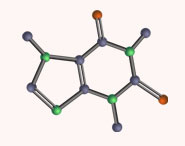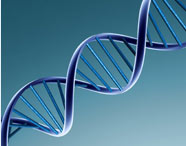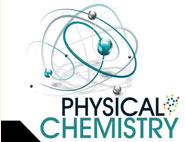


 علم الكيمياء
علم الكيمياء 
 الكيمياء التحليلية
الكيمياء التحليلية 
 الكيمياء الحياتية
الكيمياء الحياتية 
 الكيمياء العضوية
الكيمياء العضوية 
 الكيمياء الفيزيائية
الكيمياء الفيزيائية
 الكيمياء اللاعضوية
الكيمياء اللاعضوية 
 مواضيع اخرى في الكيمياء
مواضيع اخرى في الكيمياء
 الكيمياء الصناعية
الكيمياء الصناعية |
أقرأ أيضاً
التاريخ: 2023-08-07
التاريخ: 31-10-2019
التاريخ: 2025-01-19
التاريخ: 16-3-2017
|
The concentration of H3O+ ions in water is very low indeed at 10−7 mol dm−3. Pure water at 25 °C therefore has a pH of 7.00. Hydronium ions in pure water can arise only from water protonating (and deprotonating) itself. One molecule of water acts as a base, deprotonating another that acts as an acid. For every H3O+ ion formed, a hydroxide ion must also be formed, so that in pure water at pH 7 the concentrations of H3O+ and hydroxide ions must be equal: [H3O+] = [HO−] = 10−7 mol dm−3.
The product of these two concentrations is known as the ionization constant (or as the ionic product) of water, KW, with a value of 10−14 mol2 dm−6 (at 25 °C). This is a constant in aqueous solutions, so if we know the hydronium ion concentration (which we can get by measuring the pH), we also know the hydroxide concentration since the product of the two concentra-tions always equals 10−14. So, roughly at what pH does water become mostly H3O+ ions and at what pH mostly hydrox ide ions? We can now add two additional pieces of information to the approximate chart we gave you before. At pH 7, water is almost entirely H2O. At about pH 0, the concentrations of water and H3O+ ions are about the same and at about pH 14, the concentrations of hydroxide ions and water are about the same.



|
|
|
|
لشعر لامع وكثيف وصحي.. وصفة تكشف "سرا آسيويا" قديما
|
|
|
|
|
|
|
كيفية الحفاظ على فرامل السيارة لضمان الأمان المثالي
|
|
|
|
|
|
|
جناح جمعيّة العميد في معرض تونس الدوليّ للكتاب يشهد حواراتٍ معرفيّة وتاريخية معاصرة
|
|
|